Calcium/calmodulin-dependent protein kinase II (CaMKII) inhibition induces neurotoxicity via dysregulation of glutamate/calcium signaling and hyperexcitability
- PMID: 22253441
- PMCID: PMC3318689
- DOI: 10.1074/jbc.M111.323915
Calcium/calmodulin-dependent protein kinase II (CaMKII) inhibition induces neurotoxicity via dysregulation of glutamate/calcium signaling and hyperexcitability
Abstract
Aberrant glutamate and calcium signalings are neurotoxic to specific neuronal populations. Calcium/calmodulin-dependent kinase II (CaMKII), a multifunctional serine/threonine protein kinase in neurons, is believed to regulate neurotransmission and synaptic plasticity in response to calcium signaling produced by neuronal activity. Importantly, several CaMKII substrates control neuronal structure, excitability, and plasticity. Here, we demonstrate that CaMKII inhibition for >4 h using small molecule and peptide inhibitors induces apoptosis in cultured cortical neurons. The neuronal death produced by prolonged CaMKII inhibition is associated with an increase in TUNEL staining and caspase-3 cleavage and is blocked with the translation inhibitor cycloheximide. Thus, this neurotoxicity is consistent with apoptotic mechanisms, a conclusion that is further supported by dysregulated calcium signaling with CaMKII inhibition. CaMKII inhibitory peptides also enhance the number of action potentials generated by a ramp depolarization, suggesting increased neuronal excitability with a loss of CaMKII activity. Extracellular glutamate concentrations are augmented with prolonged inhibition of CaMKII. Enzymatic buffering of extracellular glutamate and antagonism of the NMDA subtype of glutamate receptors prevent the calcium dysregulation and neurotoxicity associated with prolonged CaMKII inhibition. However, in the absence of CaMKII inhibition, elevated glutamate levels do not induce neurotoxicity, suggesting that a combination of CaMKII inhibition and elevated extracellular glutamate levels results in neuronal death. In sum, the loss of CaMKII observed with multiple pathological states in the central nervous system, including epilepsy, brain trauma, and ischemia, likely exacerbates programmed cell death by sensitizing vulnerable neuronal populations to excitotoxic glutamate signaling and inducing an excitotoxic insult itself.
Figures
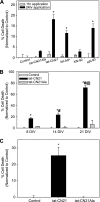
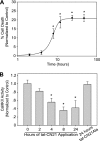
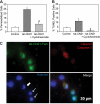
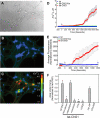
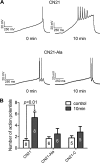


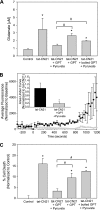
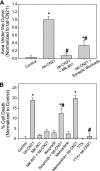

Similar articles
-
Excitotoxic neuroprotection and vulnerability with CaMKII inhibition.Mol Cell Neurosci. 2011 Apr;46(4):720-30. doi: 10.1016/j.mcn.2011.02.003. Epub 2011 Feb 21. Mol Cell Neurosci. 2011. PMID: 21316454
-
Loss of calcium/calmodulin-dependent protein kinase II activity in cortical astrocytes decreases glutamate uptake and induces neurotoxic release of ATP.J Biol Chem. 2013 May 17;288(20):14599-14611. doi: 10.1074/jbc.M113.466235. Epub 2013 Mar 29. J Biol Chem. 2013. PMID: 23543737 Free PMC article.
-
Glutamate preconditioning prevents neuronal death induced by combined oxygen-glucose deprivation in cultured cortical neurons.Eur J Pharmacol. 2008 Jul 28;589(1-3):85-93. doi: 10.1016/j.ejphar.2008.05.047. Epub 2008 Jun 6. Eur J Pharmacol. 2008. PMID: 18589412
-
CaMKII in cerebral ischemia.Acta Pharmacol Sin. 2011 Jul;32(7):861-72. doi: 10.1038/aps.2011.68. Epub 2011 Jun 20. Acta Pharmacol Sin. 2011. PMID: 21685929 Free PMC article. Review.
-
Molecular mechanisms of glutamate-dependent neurodegeneration in ischemia and traumatic brain injury.Cell Mol Life Sci. 2004 Mar;61(6):657-68. doi: 10.1007/s00018-003-3319-x. Cell Mol Life Sci. 2004. PMID: 15052409 Free PMC article. Review.
Cited by
-
The cumulative analgesic effect of repeated electroacupuncture involves synaptic remodeling in the hippocampal CA3 region.Neural Regen Res. 2012 Jun 25;7(18):1378-85. doi: 10.3969/j.issn.1673-5374.2012.18.003. Neural Regen Res. 2012. PMID: 25657670 Free PMC article.
-
Differential CaMKII regulation by voltage-gated calcium channels in the striatum.Mol Cell Neurosci. 2015 Sep;68:234-43. doi: 10.1016/j.mcn.2015.08.003. Epub 2015 Aug 5. Mol Cell Neurosci. 2015. PMID: 26255006 Free PMC article.
-
Calcium/Calmodulin-Dependent Kinase (CaMKII) Inhibition Protects Against Purkinje Cell Damage Following CA/CPR in Mice.Mol Neurobiol. 2020 Jan;57(1):150-158. doi: 10.1007/s12035-019-01765-9. Epub 2019 Sep 13. Mol Neurobiol. 2020. PMID: 31520314 Free PMC article.
-
Ca²⁺/calmodulin-dependent protein kinase II contributes to hypoxic ischemic cell death in neonatal hippocampal slice cultures.PLoS One. 2013 Aug 19;8(8):e70750. doi: 10.1371/journal.pone.0070750. eCollection 2013. PLoS One. 2013. PMID: 23976956 Free PMC article.
-
Theta-burst stimulation of hippocampal slices induces network-level calcium oscillations and activates analogous gene transcription to spatial learning.PLoS One. 2014 Jun 20;9(6):e100546. doi: 10.1371/journal.pone.0100546. eCollection 2014. PLoS One. 2014. PMID: 24950243 Free PMC article.
References
-
- Hudmon A., Schulman H. (2002) Neuronal Ca2+/calmodulin-dependent protein kinase II. The role of structure and autoregulation in cellular function. Annu. Rev. Biochem. 71, 473–510 - PubMed
-
- Perlin J. B., Churn S. B., Lothman E. W., DeLorenzo R. J. (1992) Loss of type II calcium/calmodulin-dependent kinase activity correlates with stages of development of electrographic seizures in status epilepticus in rat. Epilepsy Res. 11, 111–118 - PubMed
-
- Zalewska T., Domanska-Janik K. (1996) Brain ischemia transiently activates Ca2+/calmodulin-independent protein kinase II. Neuroreport 7, 637–641 - PubMed
Publication types
MeSH terms
Substances
Grants and funding
LinkOut - more resources
Full Text Sources
Other Literature Sources
Research Materials

